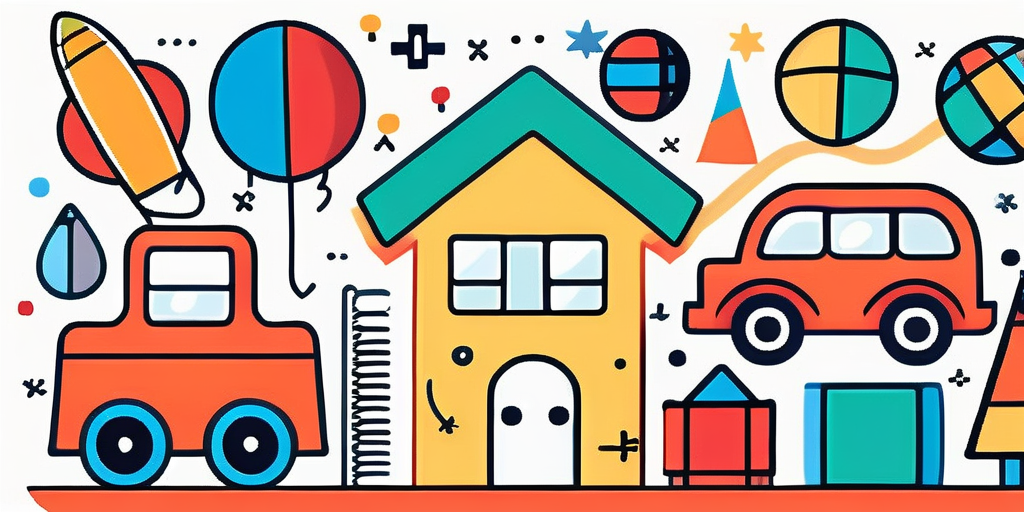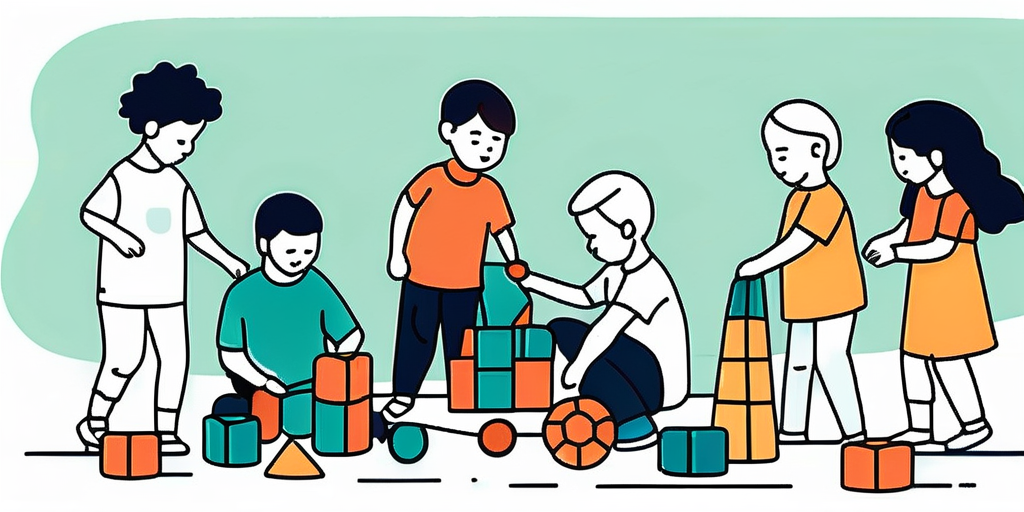Play is an essential part of a child's development. It not only brings joy and entertainment but also plays a crucial role in their learning and growth. As parents, it is important to understand the significance of play and provide our children with age-appropriate toys that can support their development. In this article, we will explore the importance of play, the role of toys in learning and growth, and how to select the top 10 toys for kids.
Understanding the Importance of Play in Child Development
Play is not just a frivolous activity; it is a way for children to explore the world, engage their senses, and make sense of their experiences. When children play, they are actively learning and developing essential skills that will benefit them later in life.

Research shows that play promotes cognitive, physical, social, and emotional development in children. It enhances their problem-solving abilities, creativity, and critical thinking skills. Play also helps children develop their fine motor skills, gross motor skills, and hand-eye coordination. Furthermore, play allows children to express their emotions, build social connections, and develop empathy and resilience.
But what exactly happens when children engage in play? Let's take a closer look.
When children engage in imaginative play, they create scenarios and stories that allow them to explore different roles and perspectives. This type of play helps them develop their language and communication skills as they engage in conversations with their playmates. They learn to negotiate, compromise, and resolve conflicts, which are essential skills for building healthy relationships in the future.
Physical play, such as running, jumping, and climbing, not only strengthens children's muscles and bones but also improves their coordination and balance. It helps them develop spatial awareness and a sense of their own bodies in relation to the environment. Through physical play, children learn to take risks, test their limits, and develop resilience.
The Role of Toys in Learning and Growth
Toys play a vital role in facilitating children's learning and growth. They provide opportunities for hands-on learning, imaginative play, and exploration. Toys can stimulate children's curiosity, encourage them to ask questions, and engage in problem-solving activities.
Pakistani children can benefit greatly from toys that reflect their cultural heritage, encourage creativity, and teach important values. For example, dolls dressed in traditional Pakistani clothing can help children develop a sense of identity and appreciation for their culture. Similarly, puzzles and building blocks can promote cognitive development and spatial awareness.
But what makes a toy truly age-appropriate? Let's delve deeper.
Selecting Age-Appropriate Toys for Children
When choosing toys for children, it is crucial to consider their age and developmental stage. Age-appropriate toys are designed to meet the specific needs and abilities of children at various stages of development.
For infants and toddlers, toys that stimulate their senses, encourage exploration, and promote motor skills development are ideal. Examples include soft toys, rattles, and textured balls. These toys provide sensory stimulation and help infants develop their grasping and reaching abilities.
Preschoolers, on the other hand, benefit from toys that promote problem-solving, creativity, and social interaction. Building blocks, art supplies, and pretend play sets are great choices for this age group. These toys allow preschoolers to engage in open-ended play, where they can experiment, create, and collaborate with others.
By selecting age-appropriate toys, parents and caregivers can ensure that children are engaged in play experiences that support their development and provide them with the necessary skills for success in life.
The Criteria for Choosing the Top 10 Toys
Selecting the top 10 toys for kids involves considering various factors. Safety is of utmost importance, so it is crucial to choose toys that meet international safety standards and do not pose any hazards to children. Toys should be made from non-toxic materials and have no small parts that could be a choking hazard.

Educational value is another important criterion. The toys should have the potential to engage children in learning activities and develop their cognitive, social, and emotional skills. Durability is also essential to ensure that the toys can withstand children's play and last for a reasonable period of time.
Safety Considerations for Children's Toys
When purchasing toys for children, it is important to prioritize their safety. Always choose toys that are age-appropriate and free from small parts that could be swallowed. Be cautious of toys with sharp edges or protruding parts that may cause injuries. It is also recommended to check for any recalls or safety warnings related to the toys you plan to purchase.
Additionally, consider the materials used in the toys. Opt for toys made from non-toxic materials that do not contain harmful chemicals. Safe toys contribute to a child's overall well-being and provide parents with peace of mind.
Educational Value of Toys
Introducing educational toys to children can have a profound impact on their development. These toys not only entertain but also teach important concepts and skills. Educational toys can be designed to enhance cognitive abilities, promote early literacy and numeracy skills, and encourage problem-solving and critical thinking.
For Pakistani children, educational toys that incorporate elements of local culture and traditions can be particularly beneficial. Toys that teach Pakistani history, geography, and language can help children develop a strong connection with their roots and foster a sense of pride in their heritage.
Durability and Longevity of Toys
Purchasing durable toys is not only cost-effective but also environmentally friendly. Toys that are built to withstand rough play and can be passed down from one child to another contribute to sustainable consumption. High-quality toys made from sturdy materials can withstand wear and tear, ensuring that they remain functional and enjoyable for an extended period of time.
Moreover, toys that are designed with durability in mind can encourage children to explore and experiment without the fear of breaking them. This freedom to play and discover fosters creativity and imagination, allowing children to fully engage with the toy and derive maximum benefit from it.
Furthermore, durable toys can also promote social interaction and cooperative play. When children have toys that can withstand the rigors of group play, they can engage in collaborative activities, sharing ideas and working together to create imaginative scenarios. This not only enhances their social skills but also teaches them the value of teamwork and cooperation.
The Impact of Toys on Children's Social Skills
Aside from fostering cognitive development, toys also play a significant role in shaping children's social skills. Certain toys promote sharing, cooperation, and communication among children, enabling them to develop vital social abilities.

Encouraging Sharing and Cooperation through Toys
Toys that encourage sharing and cooperation can help children develop crucial social skills from an early age. Games and toys that require collaboration and teamwork promote empathy and teach children the importance of working together towards a common goal. These toys can include board games, building sets, and group activities that involve turn-taking and problem-solving.
Building Communication Skills with Play
Playtime offers an excellent opportunity for children to develop their communication skills. Toys that involve role-playing, storytelling, and pretend play can enhance children's language and communication abilities. Dolls, puppets, and playsets can encourage children to express their thoughts, engage in imaginative conversations, and develop their vocabulary.
How to Maintain and Clean Children's Toys
Proper maintenance and cleaning of children's toys are essential for their hygiene and longevity. Regular cleaning helps remove dirt, germs, and allergens, ensuring that the toys remain safe for children to play with. Here are some tips for maintaining and cleaning children's toys:
Regular Cleaning for Hygiene
Toys that are frequently handled should be cleaned regularly with mild soap and water. Use a damp cloth to wipe plastic toys and wash plush toys in a pillowcase to protect them during the wash. Assure the toys are thoroughly dried before giving them back to the children to prevent mold or mildew.
Proper Storage of Toys to Prolong Lifespan
Proper storage of toys not only keeps them organized but also prolongs their lifespan. Consider using toy bins, shelves, or storage boxes to keep the toys in a designated place. Ensure that toys are stored in a clean and dry area away from direct sunlight or moisture, as these can damage the toys.
In conclusion, choosing the top 10 toys for kids involves considering their age, safety, educational value, and durability. Toys play a significant role in children's development, supporting cognitive, physical, and social growth. By providing children with age-appropriate toys and creating a conducive play environment, parents can greatly contribute to their children's learning and holistic development. So, let's prioritize play and invest in the right toys that will nurture our children's potential and creativity.





 Whatsapp us!
Whatsapp us!